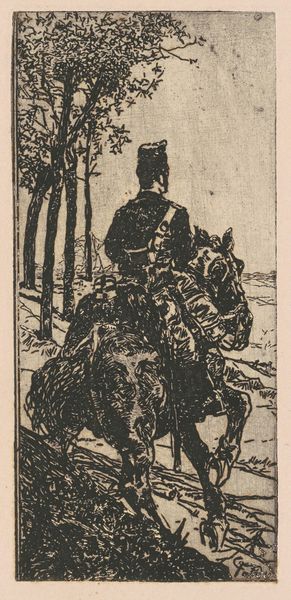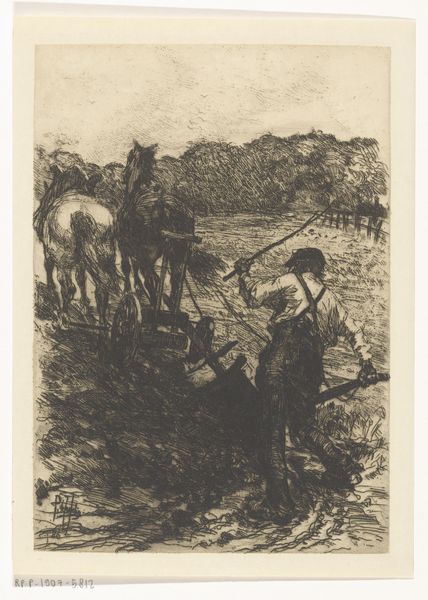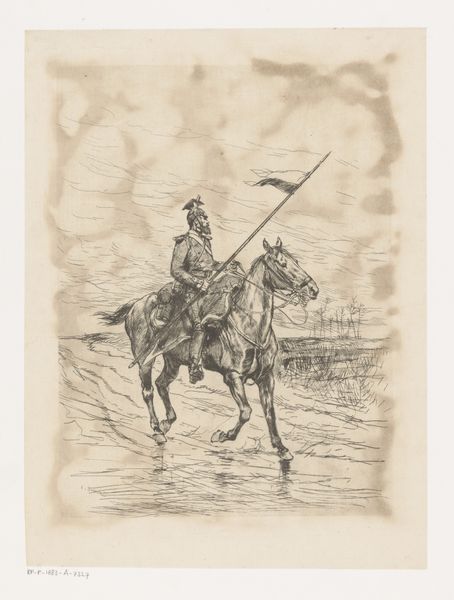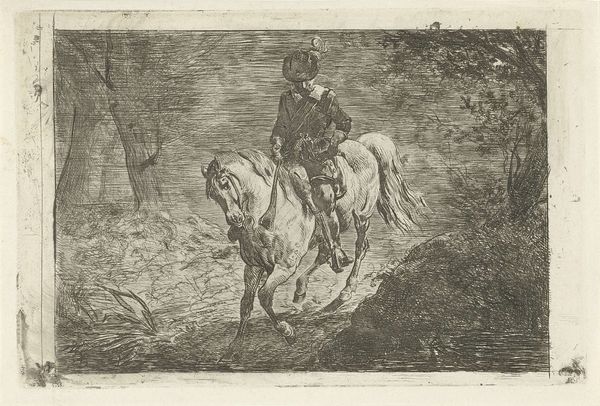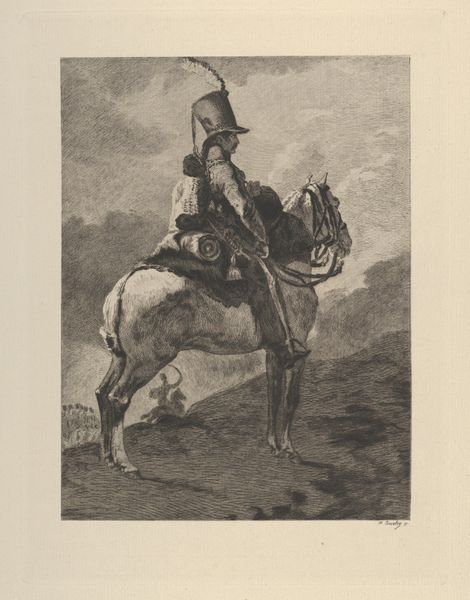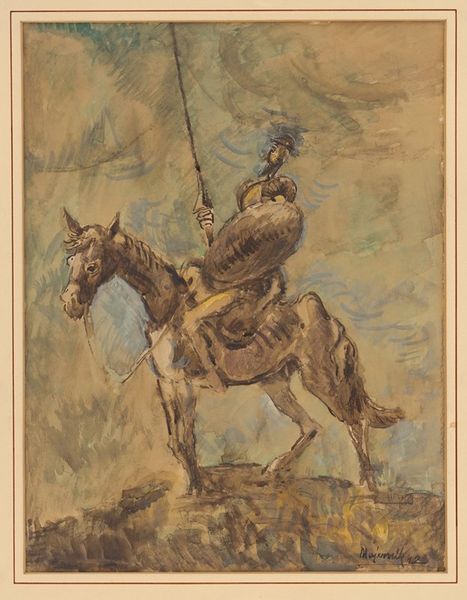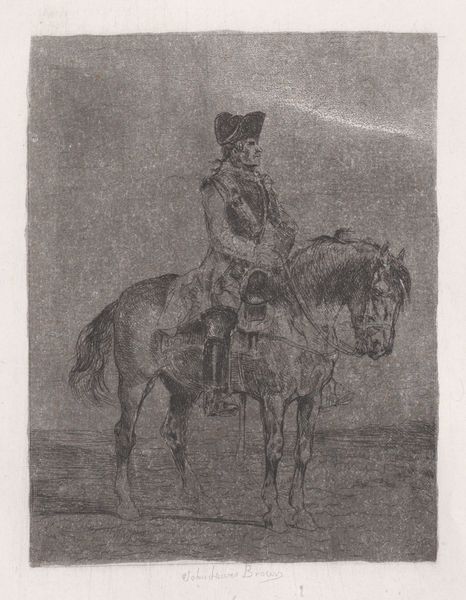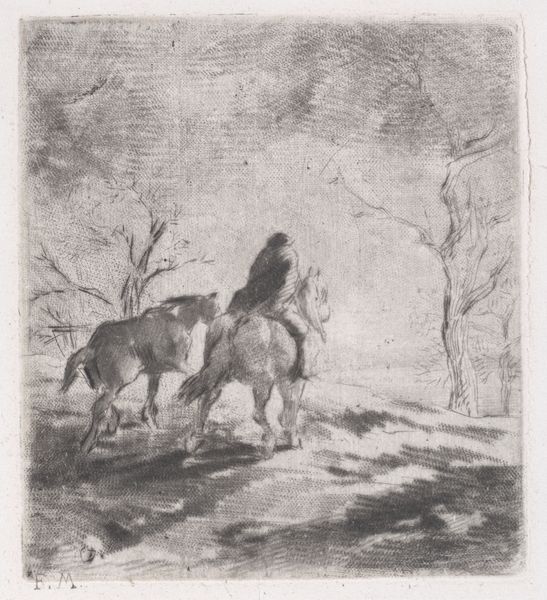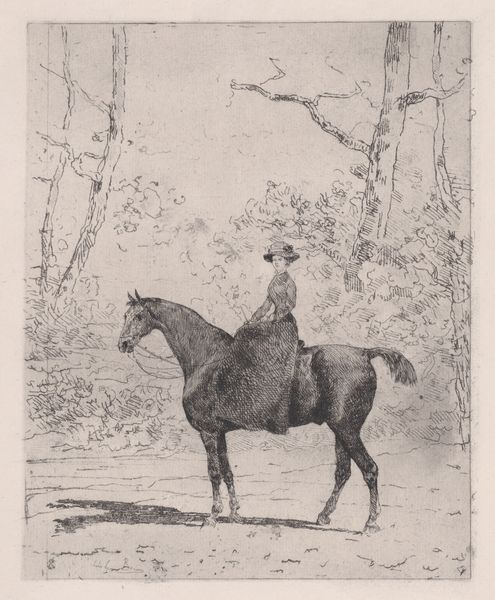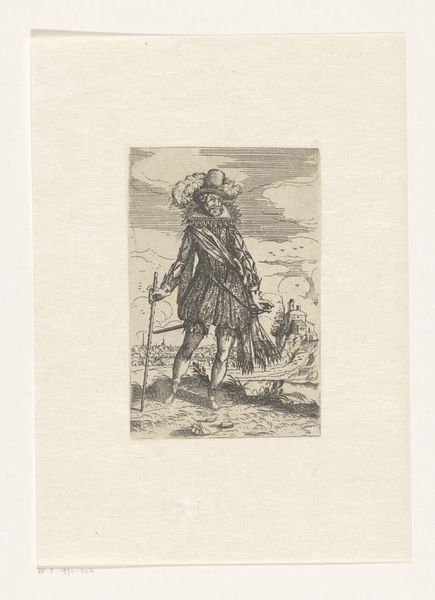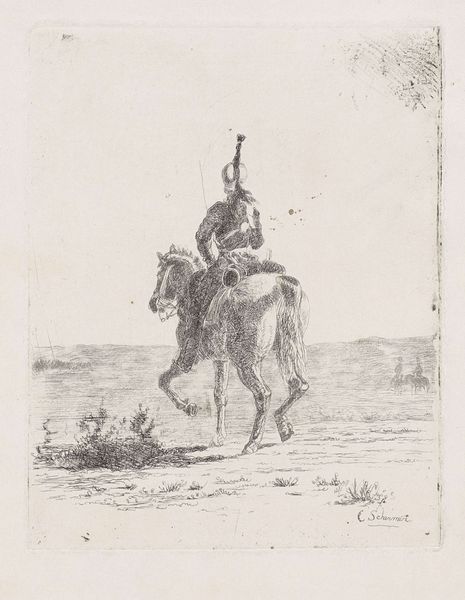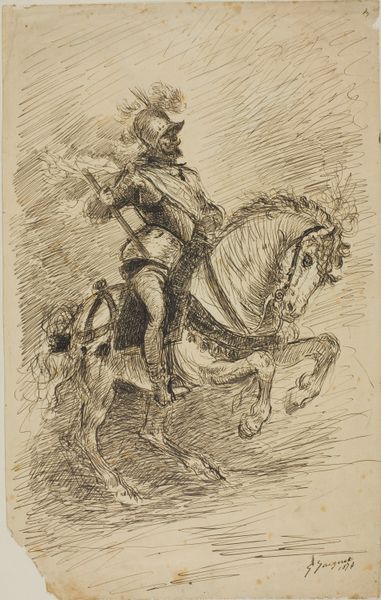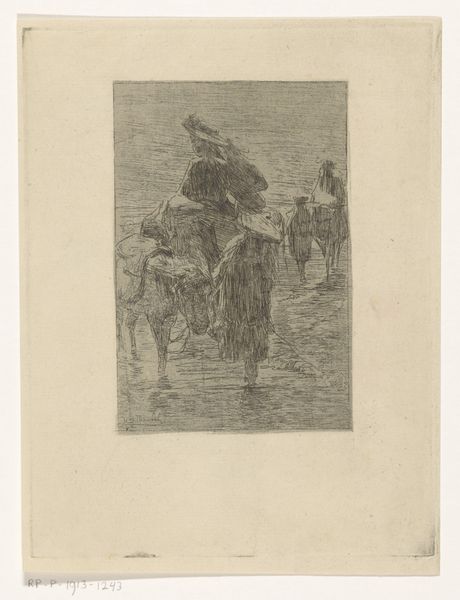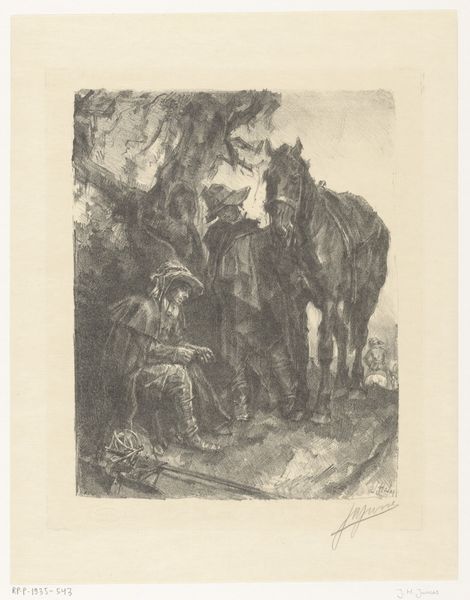
print, etching
#
portrait
# print
#
etching
#
landscape
#
figuration
#
realism
Dimensions: sheet: 26 × 20 cm (10 1/4 × 7 7/8 in.) [irregular] plate: 22 × 15 cm (8 11/16 × 5 7/8 in.)
Copyright: National Gallery of Art: CC0 1.0
Curator: This is "Patrol (Esplorazione)" by Giovanni Fattori, created between 1888 and 1890. It's a compelling etching that encapsulates a moment in Italian military life during that period. Editor: My first impression is one of subdued tension. The monochromatic palette and dense lines create a claustrophobic atmosphere. There's something almost oppressive about it. The material itself lends itself to a serious, historical interpretation. Curator: Precisely. Fattori's work often explores themes of war and its impact on society. He aimed to represent military life with a degree of realism often unseen in earlier patriotic depictions, revealing perhaps, through its raw execution, some critique of the institution. Editor: Looking closer at the medium, the etched lines feel almost scratchy and frenzied. It speaks to the labor of image-making and suggests a quick, almost desperate capture of the scene, quite different from the smooth surfaces of academic painting from this era. The process itself emphasizes the grit and struggle. Curator: And it is through this "grit and struggle" as you aptly put it that Fattori confronts romanticized portrayals of the Risorgimento. It reveals a military engaged not necessarily in glory, but potentially in a more mundane and arduous act. This reframes the very perception of Italian nationalism that was widely being consumed. Editor: Consider, too, how accessible prints like this were compared to large-scale canvases. Fattori likely understood this accessibility, and this material reality suggests that "Patrol" could reach a much broader audience than the art establishment. It allows the common viewer to consider the actual day-to-day reality, and labor of Italian military men. Curator: A democratization of imagery through medium! And indeed the success of this imagery is contingent on the cultural context that valorizes some forms of art while minimizing others. This work presents a social realism facilitated and broadened via its choice in material processes. Editor: Absolutely, this material context matters, as we see in how he manipulated the etching to achieve this affect! It speaks volumes about how art, even in reproductive form, participates actively in social narratives. Curator: Ultimately, what strikes me is Fattori's decision to foreground this solitary figure within the context of broader societal expectations, complicating the romanticization of the Risorgimento. Editor: Yes, for me it’s the artist's understanding and conscious usage of a quotidian art medium that facilitates this unique window into the material conditions of Italy.
Comments
No comments
Be the first to comment and join the conversation on the ultimate creative platform.
